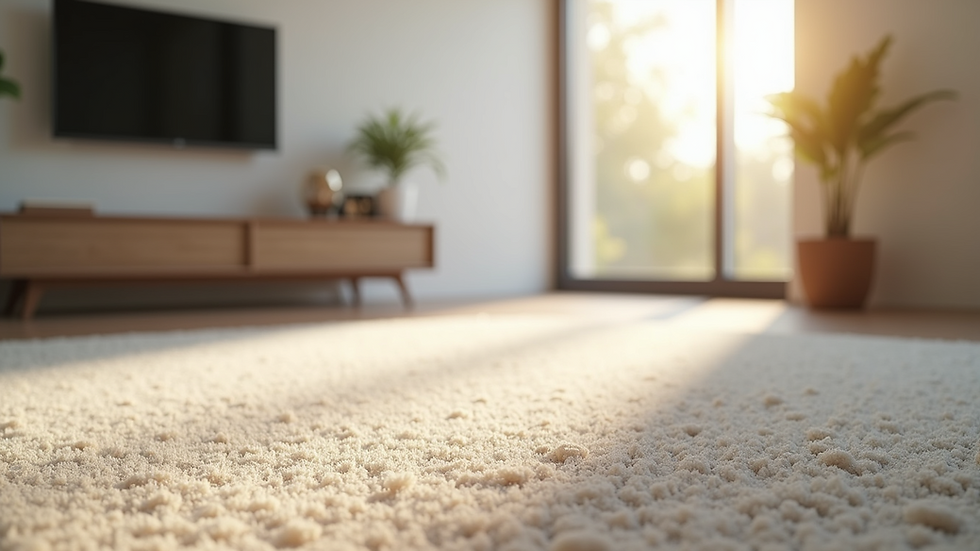Do You Really Know Your Property’s Size? Discover the Truth About Carpet, Built-Up & Super Built-Up Area
- A Tech IT
- Jun 7
- 3 min read
Understanding your property's size is crucial, whether you're a current owner or a prospective buyer. Many buyers often struggle with different terms like Carpet Area, Built-Up Area, and Super Built-Up Area. These terms are not just jargon; they represent distinct measurements that can significantly impact property values and comfort. This blog post will clear up the confusion surrounding these terms so you can make informed real estate choices.
What is Carpet Area?
Carpet Area is the actual usable area within the walls of a property. This is the space where you can lay down carpets, place furniture, or even set up home office essentials without obstruction.
To calculate the Carpet Area, simply measure the dimensions of each room and add them together.
Here's a quick example: if a room measures 10 feet by 15 feet, the Carpet Area for that room is 150 square feet. Importantly, Carpet Area does not account for the walls, corridors, or shared spaces. For anyone looking to maximize utility, knowing the Carpet Area is essential for furniture placement and living arrangements.

What is Built-Up Area?
The Built-Up Area includes the Carpet Area as well as the thickness of the walls. This measurement gives a more comprehensive idea of your property's footprint.
In simple terms, if the walls take up 5% of your space, and you have a Carpet Area of 1,000 square feet, the Built-Up Area would roughly be 1,050 square feet.
This term also includes areas that are less likely to be used, such as balconies and utility spaces. While many buyers focus on the Carpet Area, neglecting the Built-Up Area could lead to miscalculations in both value and space utilization.
What is Super Built-Up Area?
Super Built-Up Area takes the Built-Up Area a step further by including common areas that are shared with other residents. This can encompass amenities like lobbies, staircases, elevators, and garden spaces.
For instance, in a multi-story building with a Super Built-Up Area of 1,200 square feet, a portion of that space might consist of shared areas such as the lobby and parking area that all residents can access.
Developers often use the Super Built-Up Area in marketing materials to make properties seem more appealing. Therefore, buyers must understand the differences among these varying measurements to make better purchasing decisions.

Comparing the Three Areas
Understanding the differences between these three measurements is key when evaluating a property:
Carpet Area: This is typically the smallest measurement. It reflects the actual usable space and is essential for visualizing your living area.
Built-Up Area: This includes the Carpet Area plus walls and additional space like balconies.
Super Built-Up Area: This is the largest measurement, encompassing everything in the Built-Up Area along with shared common areas.
Recognizing these differences can influence your decision-making, especially when comparing properties. Developers often highlight the Super Built-Up Area, which can be misleading regarding the actual usable space.
Importance of Understanding these Areas
Being knowledgeable about these measurements empowers you during negotiations.
For example, if the Carpet Area seems too small for your needs, this insight can help you question the pricing. Additionally, appreciating the value of shared amenities through understanding the Super Built-Up Area can guide your decision.
Misunderstanding these terms can lead to overspending—paying more for limited usable space or compromising comfort while arranging your furnishings. In a survey by a real estate firm, 60% of buyers reported overpaying due to a lack of understanding of these measurements.
Impact on Pricing
Each area measurement influences property pricing differently:
Carpet Area: Properties are often priced based directly on this area, as it represents the space you can actually use.
Built-Up Area: A slight increase in this area usually results in a small increase in price, often around 5% to 10%.
Super Built-Up Area: Prices typically increase significantly when marketed using this measurement, as much as 15% or more compared to Carpet Area.
Being able to compare these areas will also shed light on how transparent a developer is regarding their pricing strategy.
Final Thoughts
Understanding Carpet, Built-Up, and Super Built-Up Areas is essential for anyone looking to purchase property. Each term carries unique implications that can impact usability and financial decisions.
Always ask the developer for clarification about these measurements when evaluating a property. Knowledge is your best ally in making sure you get a fair deal while maximizing your living space.
In a fluctuating rental market, being well-informed about your property's size will enable smarter decisions in real estate transactions. Awareness of these terms not only helps measure properly but also aids in effective negotiations.
So next time you browse property listings, look beyond just the numbers—investigate what those numbers actually mean!
.png)



Comments